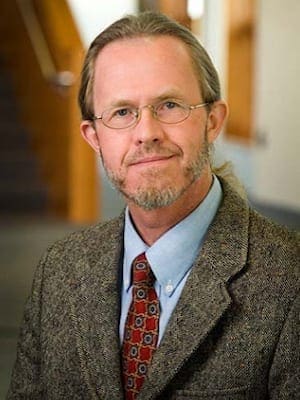The elderly widow cried as she told a visiting pastor about her husband’s death a decade earlier.
My morally distressed congregant gave voice to a significant problem in pastoral care and bioethics, arising out of the lived experience of numerous family caregivers.
More recently, another family has been making news over the contested distinction between “starving to death” a patient versus “allowing natural death” to occur by withholding or withdrawing artificial nutrition and hydration (ANH) or a “feeding tube.”
The case of Schiavo v. Schindler playing out in the Florida courts is complex. Family members are feuding over the care plan of a purportedly beloved wife/daughter/sister/in-law. Legislative and executive branches of government have challenged the judiciary. Bioethics and pro-life factions have weighed in and acted out. In a nutshell, the Schiavo-Schindler situation is more than moral distress; it is a moral mess.
Terri Schindler Schiavo’s husband and legal surrogate, Michael Schiavo, has been accused by her parents, Bob and Mary Schindler, of trying to “kill Terri” by means of “starvation.”
Florida Circuit Judge George Greer has upheld time and again the spousal surrogate’s legal bid to remove his wife’s feeding tube as a necessary step towards allowing natural death to occur.
Joni Eareckson Tada, a renowned quadriplegic evangelical advocate for the disabled, joins the Schindlers and Gov. Jeb Bush in denouncing these tactics and judgments. Tada protests that Terri “has left nothing saying that she would like to be starved to death.”
A brother-in-law, Scott Schiavo, says his brother Michael “is merely trying to let Terri die with dignity.”
Meanwhile, a midlife woman lies in limbo, having entered a neurological state akin to “persistent vegetative state” nearly 14 years ago while still a young adult.
In Terri Schindler Schiavo’s complicated case, many things are at stake for several stakeholders, yet one point must remain clear: There is an ethically discernible and categorical difference between “starving to death” and “allowing natural death.”
In ethical terms, the withholding or withdrawing of ANH may be regarded as one example of “passive euthanasia.”
“Euthanasia” is a loaded term, but it means simply “good death,” or dying done well. When so-called euthanasia has been practiced by Nazi doctors or a Dr. Kevorkian, however, ethically bad deaths have been the result. So bioethicists distinguish between “active” and “passive” forms of clinical involvement in the dying process.
Consensus among Christians and within society in general is that “active” euthanasia should be legally prohibited; and for the most part, that prohibition remains. We do not “kill” patients, or actively assist their suicide, regardless of their stated wishes or degree of suffering. Lethal drugs are not given, or other clinical or nonclinical means used, for the purpose of causing or hastening death.
The state of Oregon remains the exception in the United States, and the Netherlands and Colombia internationally, where physicians may assist a terminally ill patient’s suicide without fear of prosecution. Yet even there, many restrictions are placed upon such morally murky activity, and the actual “mercy killing” usually is seen as self-inflicted rather than administered by a doctor.
“Passive” approaches to a “good death”–or at least a better one than what might otherwise occur–describe death that is allowed, or perhaps hastened, by not taking action to interrupt and intervene in the natural dying process. In the best-case scenario, palliative “comfort” care is provided, but other medical treatments are stopped or never started, so as not to prolong dying or forestall death.
In some situations of care for the dying, a lethal dose of medication might be administered with the sole intent of relieving unremitting pain, even though the “double effect” of hastened death could be anticipated along with pain relief. There is an active and “euthanizing” element to such palliative measures, certainly. Even so, Christian ethicists have made allowances for “double effect” palliation, categorizing it apart from ethically vicious forms of active euthanasia.
Cases involving “double effect” palliation and withdrawal of life-support treatments like Schiavo’s might seem to blur the line between “active” and “passive”–commission and omission. It is important to draw that distinction, however, if for no other reason than that presented by the morally distressed congregant above.
Unnecessary false guilt might be exposed and spiritual healing effected in surrogate decision-makers and caregivers who, by withholding treatment or withdrawing treatment, actually did the best thing possible for their terminal, dying loved ones.
In addition, questions raised by Terri Schiavo and other patients suspended in unconscious and oftentimes legal limbo might be clarified by pastors helping family and clinical caregivers to discern the critical difference between “starving to death” and “allowing natural death.”
More than semantics or even bioethics, this is a pastoral and deeply spiritual matter on which we must get clear for the sake of those for whom we care.
Tarris Rosell is associate professor of pastoral care and practice of ministry at Central Baptist Theological Seminary.

